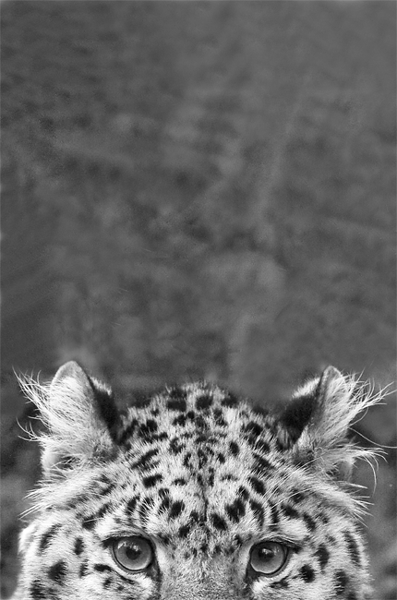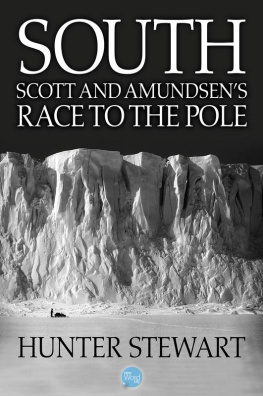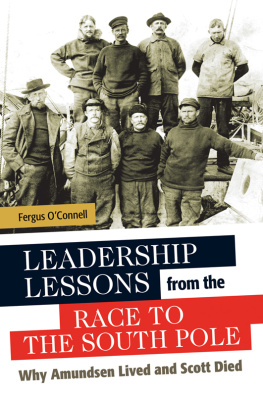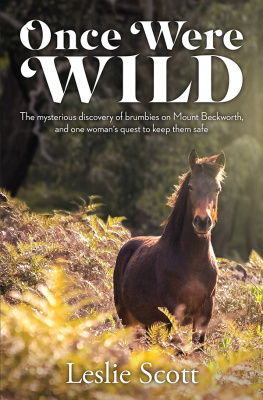Scott Leslie - 100 Under 100: The Race to Save the Worlds Rarest Living Things [Paperback]
Here you can read online Scott Leslie - 100 Under 100: The Race to Save the Worlds Rarest Living Things [Paperback] full text of the book (entire story) in english for free. Download pdf and epub, get meaning, cover and reviews about this ebook. year: 2012, publisher: Harper Collins Canada, genre: Home and family. Description of the work, (preface) as well as reviews are available. Best literature library LitArk.com created for fans of good reading and offers a wide selection of genres:
Romance novel
Science fiction
Adventure
Detective
Science
History
Home and family
Prose
Art
Politics
Computer
Non-fiction
Religion
Business
Children
Humor
Choose a favorite category and find really read worthwhile books. Enjoy immersion in the world of imagination, feel the emotions of the characters or learn something new for yourself, make an fascinating discovery.
- Book:100 Under 100: The Race to Save the Worlds Rarest Living Things [Paperback]
- Author:
- Publisher:Harper Collins Canada
- Genre:
- Year:2012
- Rating:3 / 5
- Favourites:Add to favourites
- Your mark:
- 60
- 1
- 2
- 3
- 4
- 5
100 Under 100: The Race to Save the Worlds Rarest Living Things [Paperback]: summary, description and annotation
We offer to read an annotation, description, summary or preface (depends on what the author of the book "100 Under 100: The Race to Save the Worlds Rarest Living Things [Paperback]" wrote himself). If you haven't found the necessary information about the book — write in the comments, we will try to find it.
Scott Leslie: author's other books
Who wrote 100 Under 100: The Race to Save the Worlds Rarest Living Things [Paperback]? Find out the surname, the name of the author of the book and a list of all author's works by series.
100 Under 100: The Race to Save the Worlds Rarest Living Things [Paperback] — read online for free the complete book (whole text) full work
Below is the text of the book, divided by pages. System saving the place of the last page read, allows you to conveniently read the book "100 Under 100: The Race to Save the Worlds Rarest Living Things [Paperback]" online for free, without having to search again every time where you left off. Put a bookmark, and you can go to the page where you finished reading at any time.
Font size:
Interval:
Bookmark:

UNDER
THE RACE TO SAVE THE WORLDs
RAREST LIVING THINGS
SCOTT LESLIE
FOREWORD BY STUART PIMM

In memory of Beverly Ann Leslie
T hey have such strange names. Wollemi pine. Gilberts potoroo. Greater bamboo lemur. Iranian Gorgan Mountain salamander. Nene. Bachmans warbler. And theyre so unfamiliar, too. These arent species most of us know. Is anything really at stake as they hang on to survival by only a thread?
The answer is an emphatic yes. Some of the species are intrinsically beautiful. All of them live in special places. Their declines shout out at our carelessness with our planet. And, some show that we can bring species back from the very edge, that we need not, indeed must not, accept extinction as an option.
I saw my first Iberian lynx after midnight at the Coto Doana in Spain, walking along the edge of a lake in the light of a full moon. The memory is still vivid. It looked at me just as cats do, with complete contempt, for it belonged there and I didnt. Cats appeal to us in deeply interesting ways. It was a lovely animal.
So, too, are Przewalskis horses, though Ive only seen them in zoos, where they are everyones favourites. Lemurs, too, are appealing. Most mammals are, but being cute isnt enough.
What unites the creatures, both large and small, in this book is where they live. The seven billion of us are destroying our forests and grasslandsalmost all terrestrial habitatsand making a mess of rivers, lakes, and the ocean. Habitat destruction is the major cause of species extinction. Not all habitats are equal. Some are very much more vulnerable to our actions than others. The species mentioned herein teach us that.
I saw my first nene at Slimbridge, a successful captive breeding facility in England, a world away from their homes in the Hawaiian Islands. The nene I remember most were wild onesa small flock that descended through the mist as I hiked across Haleakala on Maui. They landed in front of me as grey fog gave way to brilliant blue skies and revealed the surreal purples, yellows, and browns of the caldera. Wild, remote, beautifuland how can anything live in such a strange place? These birds and more than 100 others, 1,000 species of plants, and countless insects once thrived only in the Hawaiian Islands, adapted to those unique conditions. Note the past tense: so many Hawaiian species are now extinct.
I watched the movie Avatar and enjoyed its creativity but spent the next day watching pteropodssnails that literally fly with their feet through the ocean. Biological diversitybiodiversity for shortis far stranger than fiction!
Iran conjures up an image of deserts and, when I was there, the memory of days on rough, dusty roads. We crossed northward from the deserts of eastern Iran toward the Caspian Sea. In minutes, wet air replaced dry, and lush moist forests took over. In a cave nearby was the Gorgan Mountain salamander, living in a pool, in a sliver of wet forest south of the Caspian, in the middle of deserts and grasslands that stretch 16,000 kilometres from the Sahara to Mongolia.
Nature has amazing inventiveness and recognizes the places where these species live as being exceptional. Alas, this books species are rare because we do not. So many of them are on the edge because we have been careless. The Guam rail used to be common. Then a snake accidentally introduced to Guam ate itand all the other birds on Guamto extinction. Goats ate the vegetation off Floreana Island in the Galapagos, so the mockingbird that lived there survives only on small offshore islets. This mockingbird was one of four species, each living on a different island, that made Darwin first think about adaptation in the Theory of Evolution.
That so many aquatic species are included in this book testifies to the wretched state of the worlds rivers and lakes. Not even the worlds oceans are pristine.
Right whales were right because they were close to shore, easy to kill, and floated when harpooned. They almost disappeared because we lacked the wisdom to manage them sustainably. Or, for that matter, to anticipate that there is now a flourishing whaling industry where people shoot whales with digital cameras, not harpoons, and it generates more income than the first whaling industry ever did.
That the Amsterdam albatross, living on a remote island in the southern Indian Ocean, is in this book is further testimony to our human abilities to destroy nature in even the most lonely parts of the planet.
Above all, this book is about hope. Yes, there is bad news, for most endangered species dont even get a mention here. Many may be unknown. We may drive many species to extinction before ever giving them names. Yet there are successes. I have seen nene in the wild. With colleagues, I released the first captive-bred Guam rail back into the wild. With other ecotourists, Ive watched right whales and whooping cranes, been thrilled by the story of the crested ibis, inspired by the man who saved the cahow, and will get to see Przewalskis horse in the wild one day.
Extinctions at the present ratemy research shows them running at 100 to 1,000 times faster than expectedare unacceptable. This book also shows that they are not inevitable.
Stuart Pimm
Dr. Stuart Pimm is the Doris Duke Chair of Conservation Ecology at the Nicholas School of the Environment and Earth Sciences at Duke University. For his work in conservation, he was awarded the 2006 Heineken Prize for Environmental Sciences from the Royal Netherlands Academy of Arts and Sciences and the 2010 Tyler Prize for Environmental Achievement.
The beauty and genius of a work of art may be reconceived, though its first material expression be destroyed; a vanished harmony may yet again inspire the composer; but when the last individual of a race of living things breathes no more, another heaven and another earth must pass before such a one can be again. W ILLIAM B EEBE
D ead as a dodo. Gone the way of the dodo. This giant flightless pigeon has become synonymous with failure. Such clichs imply that the bird couldnt cut it in an evolutionary sense; it was unfit, and didnt deserve to survive, so its extinction is somehow acceptable. But the reality is that the dodo (like all organisms in healthy, natural ecosystems) was anything but unfit. In fact, archeological evidence tells us the one-metre-tall birds were once incredibly abundant on their 600-square-kilometre island of Mauritius in the Indian Ocean.
Evolution had done its job well with the dodo, adapting it beautifully to its environment. It thrived in harmony with its surroundings, reaching a peak population of possibly a half million birds; this is the epitome of a successful species, not a failed one. But time was not on its side. Having lived for millennia without natural predators, dodos had no need of an instinctive fear of anything, so they were very tame. This made them easy pickings for the first humans they had ever encountered, Portuguese sailors who stopped by the island in the early 16th century to gather food for the onward leg of their journeys.
Following on the heels of the Portuguese, who never permanently settled Mauritius, the Dutch arrived in 1638, staying for good. With them came rats, pigs, cats, and dogs, a marauding army of dodo destruction loosed from the holds of ships onto a pristine tropical island that was set with a sumptuous buffet of easy-to-obtain food. The decline of the dodo was swift. By 1680, it was gone for good, done in not by its own shortcomings but by unnatural forces against which it had no defence. Such a fate has befallen many other species in the past and likely will more in the future. But it doesnt have to be this way. Even against tremendous odds, extinctions arent inevitable, as you will discover in these stories of the worlds rarest living things.
Font size:
Interval:
Bookmark:
Similar books «100 Under 100: The Race to Save the Worlds Rarest Living Things [Paperback]»
Look at similar books to 100 Under 100: The Race to Save the Worlds Rarest Living Things [Paperback]. We have selected literature similar in name and meaning in the hope of providing readers with more options to find new, interesting, not yet read works.
Discussion, reviews of the book 100 Under 100: The Race to Save the Worlds Rarest Living Things [Paperback] and just readers' own opinions. Leave your comments, write what you think about the work, its meaning or the main characters. Specify what exactly you liked and what you didn't like, and why you think so.

![Scott Leslie 100 Under 100: The Race to Save the Worlds Rarest Living Things [Paperback]](/uploads/posts/book/54952/thumbs/scott-leslie-100-under-100-the-race-to-save-the.jpg)







